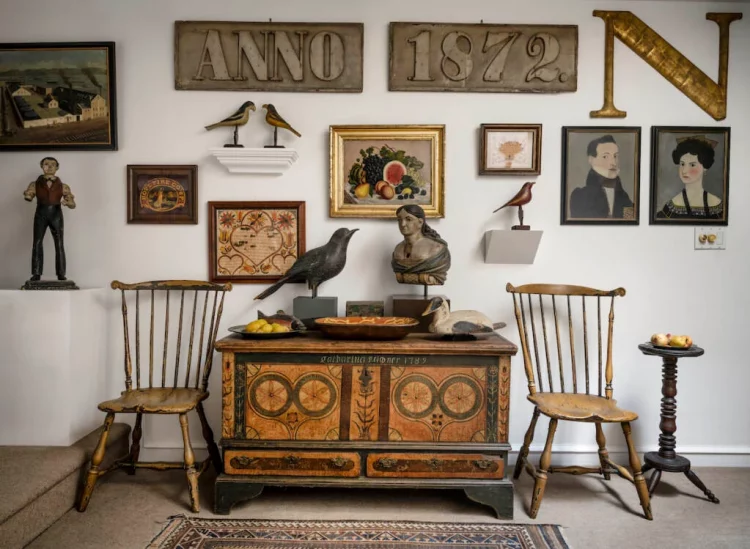Introduction: Why Antique Furniture Remains One of the Most Enduring Collectible Categories
In the world of luxury collectibles, few items evoke as much prestige, nostalgia, and investment potential as antique furniture. These timeless pieces carry with them not just the craftsmanship and artistry of bygone eras, but also a sense of history and a link to the past. Unlike modern furniture, which may reflect fleeting design trends, antique furniture remains a symbol of enduring quality, tradition, and elegance. The allure of antique furniture lies in its ability to transform a space with its unique character while also offering significant value appreciation over time.
Over centuries, furniture has been more than just functional—it’s been a representation of cultural identity, craftsmanship, and taste. From intricate carvings to masterful upholstery, antique furniture pieces have been crafted by skilled artisans, often reflecting the social, economic, and political context of the time in which they were created. As demand for luxury collectibles has surged, so too has the appreciation for these rare, beautifully crafted pieces. This article will explore the different categories of antique furniture, notable designers and makers, the process of identifying authenticity, and the importance of restoration and preservation for these high-value treasures.
Types of Antique Furniture: From Georgian to Art Deco—What Defines a Valuable Piece
Antique furniture encompasses a vast range of styles and periods, each with its own distinct aesthetic and historical significance. The value of a piece is often determined by its provenance, craftsmanship, rarity, and condition, as well as its alignment with certain stylistic movements. Here are some of the most coveted categories of antique furniture:
1. Georgian Furniture (1714–1830)
The Georgian era is known for its elegant, symmetrical designs and exceptional craftsmanship. The furniture from this period is often characterized by simple yet sophisticated lines, solid proportions, and fine materials such as mahogany, oak, and walnut. Famous for its Chippendale and Hepplewhite styles, Georgian furniture is highly sought after by collectors. Pieces such as highboys, serpentine-fronted chests of drawers, and elegant wing-back chairs are considered particularly valuable.
2. Victorian Furniture (1837–1901)
The Victorian period saw an explosion of styles, from Gothic Revival to Aesthetic Movement furniture. Rich in ornamentation, Victorian pieces often featured intricate carvings, velvet upholstery, and bold colors. The Victorian era is particularly noted for its large, heavy pieces designed for both function and decorative appeal. Pieces like bachelor chests, pocket watches, and mantel clocks continue to attract collectors for their craftsmanship and elaborate detailing.
3. Louis XVI and French Rococo Furniture
Louis XVI furniture, often referred to as French Neoclassical, was characterized by clean lines, classical motifs, and the use of gilded wood. French Rococo furniture, on the other hand, emphasized elaborate curvatures, floral carvings, and pastel-colored finishes. Renowned for its elegance and ornate detailing, Louis XVI furniture includes bureaux, comodes, and marquetry tables. These pieces often feature luxurious materials such as porcelain, bronze, and lacquered wood.
4. Arts and Crafts Movement (Late 19th Century–Early 20th Century)
In response to the industrial revolution, the Arts and Crafts movement sought to bring the focus back to craftsmanship and authenticity. This style is often associated with designers like William Morris and Gustav Stickley. The furniture produced during this period is marked by its sturdy, handcrafted quality and simple, utilitarian designs. Mission-style chairs, oak tables, and craftsman-style cabinets are some of the most coveted pieces from this movement.
5. Art Deco (1920s–1940s)
In the early 20th century, the Art Deco style emerged as a symbol of luxury and modernity. Featuring geometric patterns, sleek lines, and bold colors, Art Deco furniture often incorporated exotic materials like ivory, chrome, and lacquer. Furniture from this period—such as sleek armchairs, mirrored sideboards, and streamlined cabinets—represents a departure from traditional forms and embraces modern aesthetics. Art Deco furniture continues to be highly desirable in the world of luxury design and collecting.

Famous Designers and Makers: Exploring Collectible Works by Names Like Chippendale, Louis XVI, and Frank Lloyd Wright
The allure of antique furniture is also heavily influenced by the names behind the pieces. Renowned designers and makers have left a lasting legacy, and their works continue to fetch high prices at auctions and in private collections. Some of the most celebrated names in the world of antique furniture include:
1. Thomas Chippendale (1718–1779)
Chippendale is perhaps the most famous furniture designer in British history, and his works remain highly sought after. Known for his distinctive style that merged rococo, Chinese, and Gothic influences, Chippendale furniture is often characterized by fine carvings, scrolled legs, and elegant proportions. His most famous works include Chippendale armchairs, dressing tables, and bookcases, many of which are regarded as masterpieces of craftsmanship.
2. Louis XVI (1754–1793)
Louis XVI furniture embodies the elegance and simplicity of Neoclassicism. Known for clean, geometric lines and luxurious materials, Louis XVI furniture is often adorned with gilded bronze, marble tops, and carved wood. Pieces from this period are frequently associated with French aristocracy and the grandeur of the Versailles court. Notable pieces include Boulle cabinets, Commode a Arbalette, and canapé chairs.
3. Frank Lloyd Wright (1867–1959)
Frank Lloyd Wright, known for his work in architecture, also designed furniture that reflected his commitment to natural materials and organic design. His designs incorporated elements of Arts and Crafts and Prairie Style, creating furniture that was minimalist yet functional. Wright-designed chairs, tables, and desks from his time with the American Arts and Crafts movement remain highly collectible and respected for their craftsmanship.
Identifying Authenticity: How to Spot Genuine Antique Pieces Versus Reproductions
One of the most important aspects of collecting antique furniture is knowing how to identify authentic pieces versus reproductions. With the rise of counterfeiting and the availability of reproduction furniture, collectors need to be aware of the following tips to ensure their purchases are genuine:
1. Examine the Wood
Genuine antique furniture is usually made from solid wood, whereas reproductions are often made from veneer or particleboard. Look for signs of aging in the wood, such as natural wear patterns, shrinkage, and color variation that indicate the piece has been in existence for a considerable time.
2. Check for Craftsmanship
Authentic antique furniture is often crafted by skilled artisans with attention to detail. Look for signs of hand-finishing, carving, and joinery (such as dovetail joints) that would be difficult to replicate. The quality of finishing should be noticeably superior compared to mass-produced pieces.
3. Provenance and Documentation
Provenance is critical in establishing the authenticity and value of an antique piece. Documents such as original purchase receipts, auction catalogs, and previous ownership records can significantly increase the piece’s authenticity. Reputable dealers and auction houses can provide certificates of authenticity.
Restoration vs. Preservation: The Art of Maintaining Antique Furniture
When it comes to antique furniture, restoration and preservation are delicate processes that require expert care. While restoration aims to bring a piece back to its original condition, it must be done carefully to maintain its historical integrity. Over-restoring a piece can diminish its value. Preservation, on the other hand, focuses on maintaining the piece’s current state without altering its original structure or finish.
Preservation Tips
- Avoid direct sunlight to prevent fading.
- Clean gently with soft cloths to avoid scratching.
- Control humidity and temperature levels to prevent warping or cracking.
- Use professional restoration services for significant repairs.
Conclusion: How Antique Furniture Can Enhance Both Your Collection and Your Living Space
Antique furniture offers a unique opportunity to own a piece of history while also investing in an item that can appreciate in value over time. Whether you are collecting iconic pieces from designers like Chippendale and Louis XVI, or simply seeking to enrich your living space with elegant, timeworn treasures, antique furniture provides both aesthetic beauty and historical significance. The careful balance of restoration, authentication, and knowledge of market trends ensures that your collection will continue to captivate and enhance both your personal environment and your wealth portfolio.
















































